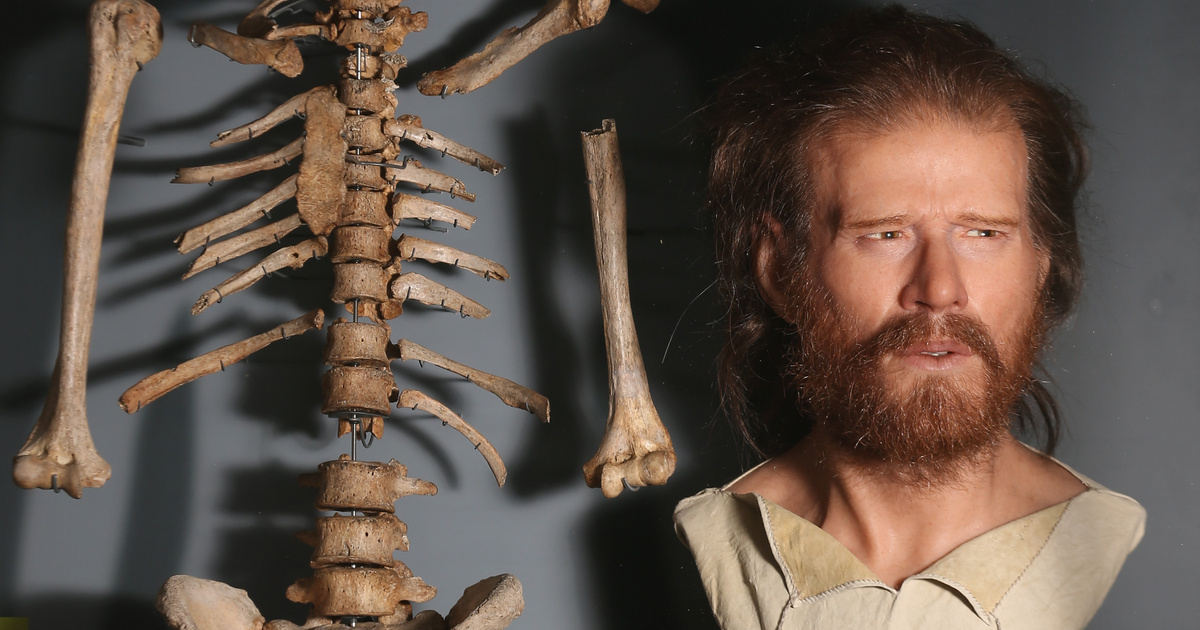A big part of the initial desire to look into the past is that we want to glimpse the faces of the people who once lived. Thanks to ever-evolving technology, we can take a closer look at people who died long ago in the Stone Age, pharaohs or kings. The starting point for re-creation is always a skull, so to what extent is the end result of meticulous work accurate and to what extent the result of subjective creative decisions?
The beginning of a reconstruction is usually an investigation, because in the case of former rulers it is not uncommon for contemporary images or descriptions of them to have survived. From the latest work of the Face Lab at John Morris University II. Restoration of the face of Pharaoh Ramses: From the photographs, looking at us is a bald, grizzled old man who lived three thousand years ago, which we usually forget immediately, even if he pushes a shopping cart towards us in the store. Caroline Wilkinson, the Face Lab’s professional director, explains that even before using clay or 3D software, she and Cairo University staff captured what could be known about the model, what kind of lives did the pharaohs live, and what kind of lives did the pharaohs live? The clothes they wore, how they styled their hair.
It is not an exclusively museum type
Anatomical basics are complemented by the latest technical advances, such as CT scans and DNA analysis. How realistic the reconstruction is is not only an interesting, but a precise scientific question, because it is not always necessary to reconstruct old faces, but in some cases it may be necessary to identify the victim of the current criminal investigation. Based on tests, today’s facial reconstructions are particularly good.
When applying CT technology, a database containing skull X-rays and facial images of people living today is searched for the most similar ones in order to more accurately determine the shape of muscles and tissues. The search is narrowed based on race, gender and age, and the work is supported by the program. In the Face Lab research, 52 volunteers successfully matched the original facial image with the reconstruction in the vast majority of cases.
Terry Simmons Ehrhardt, an FBI research associate, examined the accuracy of the reconstructions and found that computer facial recognition software was able to match the original facial image to the reconstruction in 77-83 percent of cases. He found that the reconstruction software recognized the shape of the face well, but often underestimated the width of the mouth, while overestimating the thickness of the lips and the length of the nose.
A good example of opinionated cases is that, especially in prehistoric cases, the archaeologist would choose the skin, hair and eye color of the model according to his own opinion. This can actually be determined based on DNA analysis. For example, Ötzi, who was found in the South Tyrol Alps, was found to have somewhat incorrectly matched his appearance to the current population of the region.
Other problems also arise with the software, while reconstructing the face of a Stone Age woman who lived in Thailand 13,000 years ago, they found that most of the faces in the database are European – of course, this greatly worsens the accuracy of the data. The final result.
Based on the latest research published in 2022, we can learn more about DNA than ever before. Genetic material reveals how wide the eyes are or how thin the hair is, whether the eyebrows have grown together, how wide and shaped the nose is, and how thick the beard is.
In some cases, more basic information can be revealed: a skull found on the Swedish warship Vasa, which sank in 1628, was clearly thought to be a man by experts – and genetic tests showed it was in fact a woman. So Oscar Nilsson, world-renowned in the field of facial reconstruction, had to create Gertrude in addition to the Gustave reconstruction he had already created.
Nelson points out that it is important to record the facts right at the beginning of the work. Of course, it’s difficult to assess accuracy when trying to reconstruct faces that have not only been photographed, but also drawn – such as human ancestors and their relatives, such as Neanderthals. Although we know more and more about their lifestyle and culture, since in their case they are trying to recreate a never-before-seen non-human face, the artist and the audience have to rely more on their imagination.












































